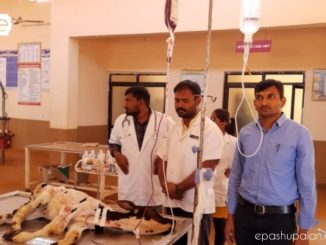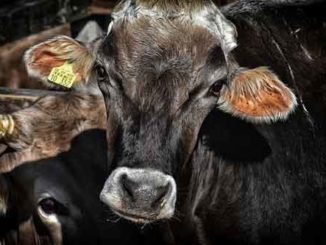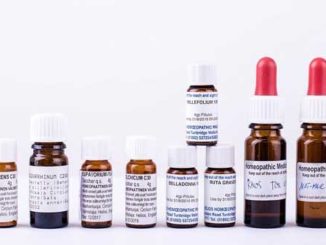Abstract
When a conceptus dies suddenly before Day 42 of pregnancy, it is referred to as embryonic mortality in cattle. In dairy production systems, embryo mortality is a considerable source of financial loss. Lower conception rates are a direct result of embryo mortality, which has an influence on productivity, profitability, and efficiency. With no impact on cycle durations, the majority of embryonic mortality in cattle occurs between days 8 and 16 during blastocyst hatching and implantation. Approximately 80% of this loss occurs before days 16 and 17, 10% to 15% between days 17 and 42, and 5% after day 42. In first-service cattle, estimates of embryonic mortality ranged from 10 to 40 % to 65 %, although in repeat-breeder cows, they ranged from 10 to 65 %.

Introduction
The majority of cattle reproductive failures result from embryonic mortality following natural breeding or artificial insemination, with a mortality rate of up to 40% of all fertilized eggs. Early embryonic mortality is more common than late embryonic mortality. The timing of insemination is critical because insemination too late in the estrous cycle causes ovum ageing and embryonic death. Artificial insemination during pregnancy will lead to loss, either because of infection or mechanical damage to the foetal membranes.
Cause for early embryonic death
The most common causes of embryo are those of genetic, physiological, endocrine, or environmental origin.
- Genetic
Genetic causes of embryo death include chromosomal defects, individual genes and genetic interactions. Genetic abnormalities account for about 10% of embryonic loss within the first two weeks. The embryo can die within the first 5 days of pregnancy if lethal genes are expressed. Another genetic factor that contributes to embryonic death is an abnormal chromosome number in some or all of the embryonic cells, which results in abnormal embryo growth and, in most cases, death during the first trimester of pregnancy. Inbreeding has also been associated with early embryonic death.
- Endocrine Factors
It has proven that the relationship between progesterone and estradiol in circulation during the first two weeks after insemination plays an important role in the maintenance of luteal function and thus pregnancy. Progesterone is necessary for the maintenance of pregnancy. A progesterone deficiency caused by primary luteal insufficiency has been reported as a cause of early embryonic death, but it is unlikely to be common. Even if fertilization was successful, a new wave of ovarian follicles grows during the luteal phase. If the estradiol production of these growing luteal phase follicles is not reduced early enough, luteolysis occurs and the corpus luteum is resolved. Failure of release of LH results in delayed ovulation. Since there is delay, the sperm cells have become poorly viable as they do in the cow within 24 to 48 hours and because of the aged conditions of the sperm cells, early embryonic death may result.
- Infectious Causes
Specific and non-specific uterine pathogens can infect the embryonic environment. A variety of viruses, bacteria, and protozoa that enter the uterus via the haematogenous route or the vagina cause specific uterine infections. Bacteria are the most common non-specific pathogens that enter the uterus via ascending infection. Uterine pathogens can cause embryo motility by altering the uterine environment (endometritis) or by a direct cytolytic effect on the embryo.
- Nutritional Deficiencies or Malnutrition
Reduced progesterone levels after breeding may be responsible for decreased fertility/increased embryonic mortality in cows bred during a negative energy balance. High dietary protein, resulting in high concentrations of urea in plasma and milk, has been associated with decreased fertility in dairy cattle. A severe lack of vitamins (vitamin A) or other nutrients (Cu, Zn, I) that act as metabolic regulators can result in early embryonic death.
- Age of the Dam
Aged animals have reduced follicular activity and oocyte quality, resulting in embryos with lower developmental competence. Furthermore, the quality of the endometrium deteriorates with age.
- Temperature or Heat Stress
Temperature and relative humidity are the most important environmental stressors affecting dairy cow reproductive performance. Heat stress can reduce fertility in lactating dairy cows in a number of ways. Heat stress can reduce dry matter intake, which can inhibit GnRH and LH secretion from the hypothalamo-pituitary system indirectly. Heat stress can directly disturb the uterine environment, resulting in embryo loss and infertility.
- Environmental Toxicants, Teratogenic compounds and Mycotoxins
When environmental toxins, teratogenic compounds, and mycotoxins are consumed during critical early stages of pregnancy, they can have severe consequences for embryo survival.
- Incompatibility
The male’s inherited genotype may include a variety of genetic factors that cause incompatibility and early embryonic loss. In cattle, homozygosity for certain blood groups and certain substances related to transferring and J-antigen in sera are associated with increased embryonic loss as well as decreased fertilization rate.
Diagnosis
Embryo mortality diagnosis based on embryo examination, progesterone determination in blood, milk, and saliva, and pregnancy associated glycoprotein (PAG) Test.
Treatment
Specific treatments for conditions such as delayed ovulation and endometritis may be done.
- Management
Cows should be fed diets that fulfil their nutrient requirements. To reduce high ambient temperatures, shade, sprinkler, or forced ventilation systems are used. High-quality sperm from high-fertility bulls that has been properly stored, handled, and thawed is used. AI should be done twice during each estrus, preferably at 12 or 24 hour intervals. Clitoral stimulation at Al for at least three seconds. Inbreeding of both the cow and of the potential embryo is minimized by good recording systems and the use of computer based programs.
- Supplementing Progesterone
A significant increase in cattle conception rate was observed when Crestar ear implants (Norgestomet) were administered on day 7 or 500 mg of depot progesterone was administered on the fifth day of Al.
- HCG Administration
Human chorionic gonadotropin (hCG) administration induces ovulation and the formation of a functional accessory CL, which increases progesterone and may improve embryo survival. It was shown that injecting 3300 IU of hCG into lactating cows 5 days after AI resulted in an increase in the number of CL and higher plasma progesterone concentrations.
- PMSG Administration
The luteotropic effect of PMSG in cattle was studied, and it was discovered that administration of 500 IU of PMSG on day 7 after estrus resulted in a significant increase in progesterone concentration.
- GnRH Treatment
GnRH (250 g) administration at the time of insemination increases pregnancy rates by 12.5%, with the effect being more pronounced in repeat breeder cows. GnRH administration during estrus raises serum progesterone levels as well as the proportion of large luteal cells in the corpus luteum.
| The content of the articles are accurate and true to the best of the author’s knowledge. It is not meant to substitute for diagnosis, prognosis, treatment, prescription, or formal and individualized advice from a veterinary medical professional. Animals exhibiting signs and symptoms of distress should be seen by a veterinarian immediately. |






Be the first to comment